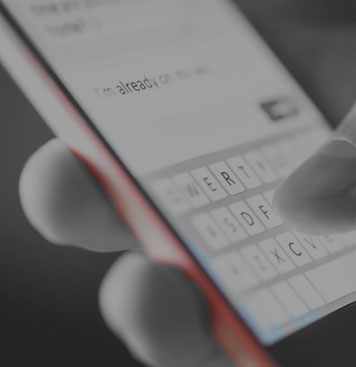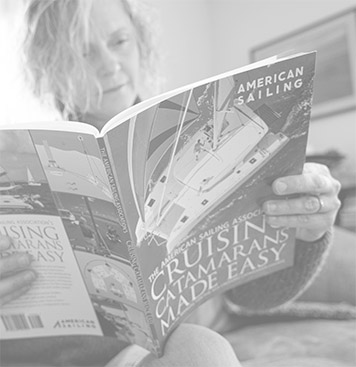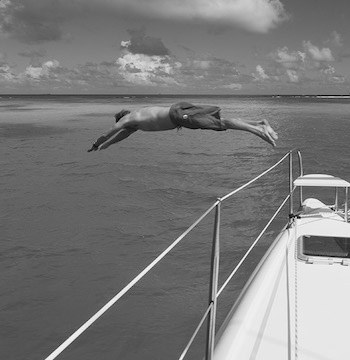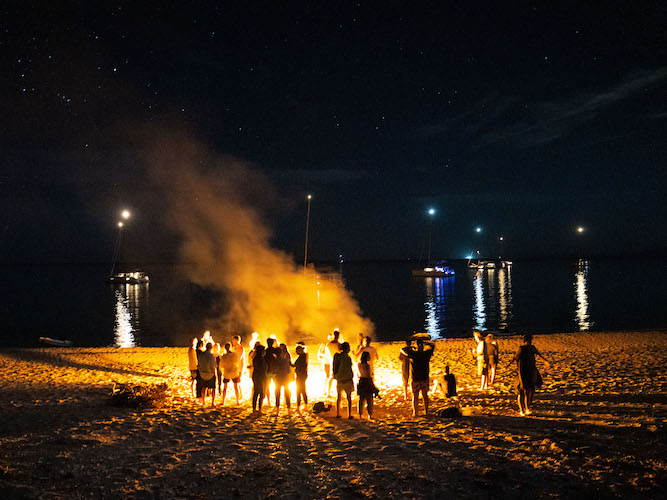Sailing Charter – What’s in My Bag?
I’m often asked, what’s in my bag? What do you pack in your bag when you travel to charter?”
The only thing I like less than packing for vacation is unpacking once I get home. Since I can’t help with the latter, let’s tackle the former. How do you decide what to bring on charter with you? What will you need for personal gear? Technical gear? Safety gear? What is already on board? So many questions with unfortunately just as many answers.
Hopefully, this list and discussion can help you better prepare for your charter vacation and alleviate some of the unknowns before they cause any more stress.
The Essentials to Pack for Your Sailing Vacation
Let’s start with the low-hanging fruit. This is my standard personal clothing packing list for a one-week charter. I reliably end up using slightly less than what I pack, but I like that extra bit of comfort knowing that I still have something clean and dry to get into at the end of the week should I get extra sweaty out there.
Personal clothing depends on where and when you’re going sailing. Sailing in the Caribbean in April will certainly require different attire than sailing from Ushuaia to Antarctica in July.
UV protection is necessary regardless: use sunscreen or clothing. I prefer light, long sleeve shirts with hoodies and light shorts. Always bring rain gear; as soon as you say “I won’t need this” and leave it behind, you’ll get 5 days of rain. I get cold when I swim, so I always pack a rash guard and dive vest so I don’t exit the water shivering every single time.
I love Gill and Free Fly Apparel for tech and comfort. They both have SPF clothing that performs well in heat and chill. I’m a big fan of the Gill UV tech quarter zip and the Free Fly bamboo long sleeve hoodies.
Personal Clothing for Sailing in Any Weather
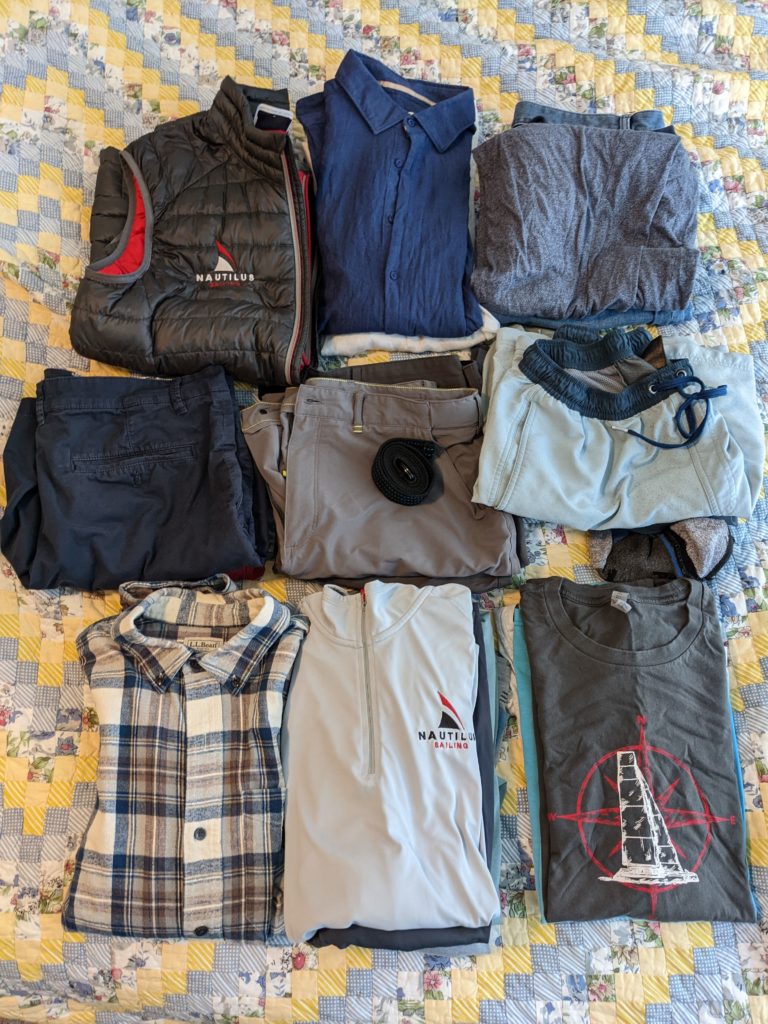
- UV shirts (Gill, Free Fly hoodies)
- UV shorts (gill, free fly)
- Hat
- Sunglasses 2x
- Swim trunks 3x
- T shirt 2x
- Jeans
- Socks 2x
- Sweatshirt or flannel
- Rain jacket (gill)
- Rain pants (gill)
- Nice shirt
- Nice shorts
- Flip flops
- Sneakers
- Neck buff for sun protection
- Rash guard
- Neoprene / fleece dive vest w/hood
Personal Gear
- Dive mask
- Swim Goggles
- Anti fog spray
- Dive knife
- Dive Watch / computer – if diving
- Hawaiian sling w/trident tip and single or double barb tip inside tip protectors. NOT PICTURED BECAUSE MY BROTHER STILL HASN’T REPLACED THE ONE HE BROKE
- Toiletries (toothbrush, toothpaste, floss, soap, nail clippers, glasses repair kit, razor blades and handle, deodorant, Rx meds, contacts, contact solution, spare glasses, q-tips, blistex)
First Aid kit
- Band aids
- Medical / athletic tape 2x
- Gauze
- Tylenol
- Ibuprofen
- Cortisone cream
- Fake tears
- Triple antibiotic ointment
- Seasickness pills
- Ace Bandage
- Second skin
- Butterfly sutures
- Alcohol wipes
- Fabric sling
- Lighter
- Super glue / dermabond
Techy Kit for a Sailing Trip
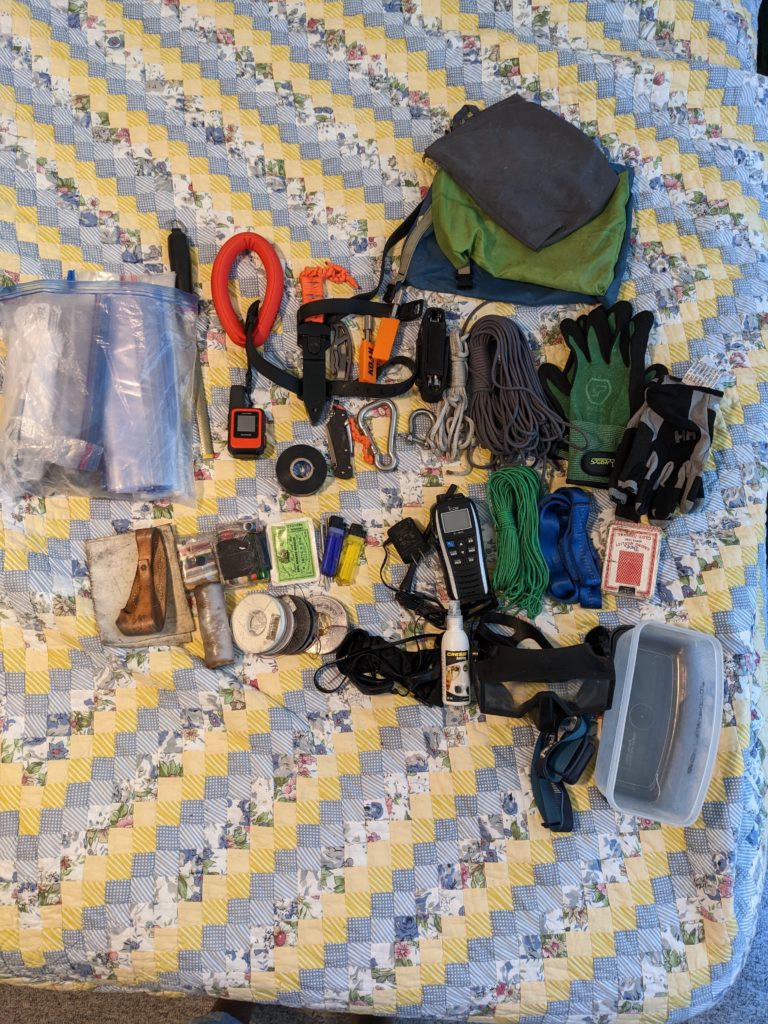
- Sail repair kit
- 1SF sail material
- Waxed sail thread
- Palm
- No. 4 whipping twine, assorted colors (Marlow)
- Lighters 2x
- Sailmakers’ needles, assorted
- Small diameter fids
- Small clothing stitch kit (thread, needles, scissors)
- Handheld VHF and charger
- Tool kit
- Leatherman
- Sail tool / knife (w/marlinspike)
- Sharp knife w/serrations
- Spare cordage (100lb, 550lb tests)
- 6mm dyneema
- Tubular webbing (lashing length)
- 1”-2” D-shackle
- Headlamp 2x (w/red light option)
- Electrical tape
- Sail gloves
- Deck of cards
- 4” carabiner
- Reef gloves
Other Kit You Should Consider for a Liveaboard Vacation
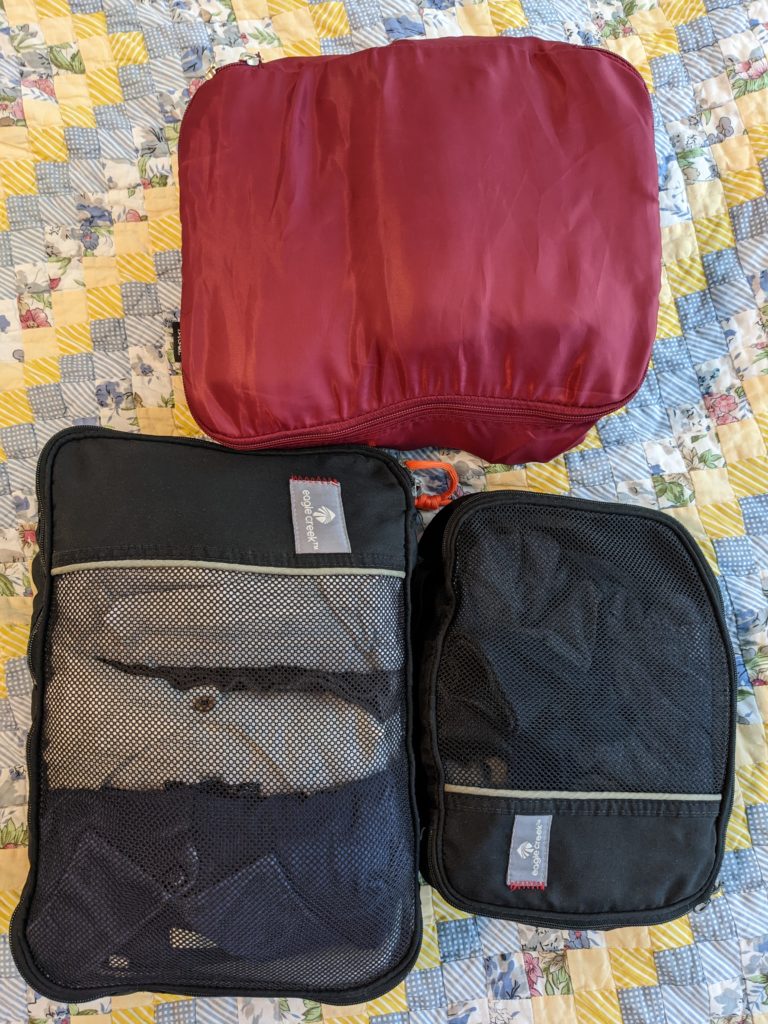
- Garbage bags
- Ziplock bags (gallon, quart)
- Knife sharpener
- Wine bottle opener
- Extra face masks
- Assorted charging supplies
- 2 USB-C
- 2 USB-mini
- DC-to-USB adapter
- Euro-US adapter
- Wall (AC)-to-USB plug
- 2 sets of headphones / earbuds
I get cold when I swim, so I always pack a rash guard and dive vest so I don’t exit the water shivering every single time.
Charter companies usually provide snorkeling gear, however, the masks are always in some form of disrepair, hence why I pack my own. The dive knife is to bring along on spear fishing missions. You’ll want a way to push the lionfish off the sling without touching it. This is where the reef gloves are useful too. Getting stung by a lionfish is an experience I do not wish to repeat.
Boats are equipped with basic first aid kits. At the beginning of the season, these will be well-furnished kits. As the season wears on, more items will be used and, unfortunately, not replaced. I always pack a basic first aid kit to address cuts and scrapes. I want to be able to triage broken bones until more advanced help arrives.
Most charter companies will keep a small sail repair kit on board. Every one I’ve seen looks like it gets restocked once a decade, whether it needs it or not. The tools that are missing in the kits are the one you need. It’s a good idea to familiarize yourself with basic sail repair tools and how to use them. Learn basic sail stitches as well. Every time that I’ve left my sail repair kit at home, I’ve needed it.
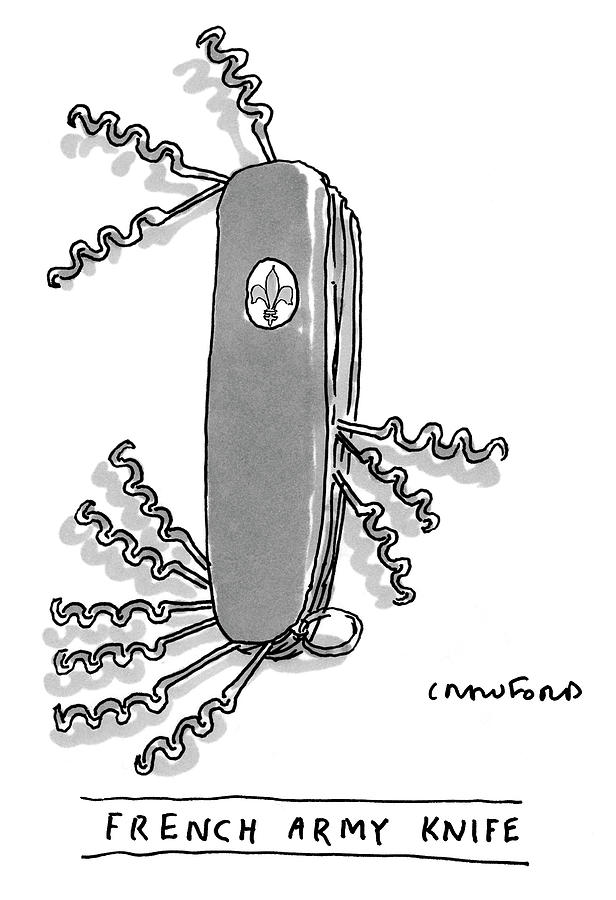
I pack spare cordage comes in handy when fishing. Cut a 40’-50’ length of the 550lb test paracord, burn each end. Into one end, tie a noose. Extend the loop of the noose to be 1’-2’ in diameter. Tie the other end of the line to the stern cleat nearest your fishing line. Once you land the fish, loop the noose around the tail fin and pull it tight. It’s not getting away now! Using a large knife (dive knife if no other), cut the gills open completely from both sides. Toss the fish back in the water and drag it backwards by the noose around the tail. This bleeds the fish out quickly and completely, and hopefully, as humanely as possible. This also prevents the meat from getting tainted by the adrenaline rush. After about 30 seconds, retrieve the fish and clean it as you like!
The stock knives on charter boats are pathetically dull. I like sharp knives, so I pack a basic diamond sharpener. And, while they should have one on board, I carry a spare wine bottle opener. It would be terrible to have bottles of great wine on board without a way to open them.

Ben Martin is a long-standing instructor at Nautilus Sailing. ASA 201, 203, 204, 205, 214 Certified Instructor, RYA Yachmaster Offshore, USCG 100 Ton Captain. Ben grew up in Northern Maine sailing dinghies on a lake. He graduated from University of Maine with a Master’s in Electrical Engineering. After working for the US Navy for a few years, he decided to pursue his passion on the water and worked as a charter yacht captain for several years in the Caribbean and the Mediterranean. Eventually, his career led to sailing instruction and he hasn’t looked back since.
